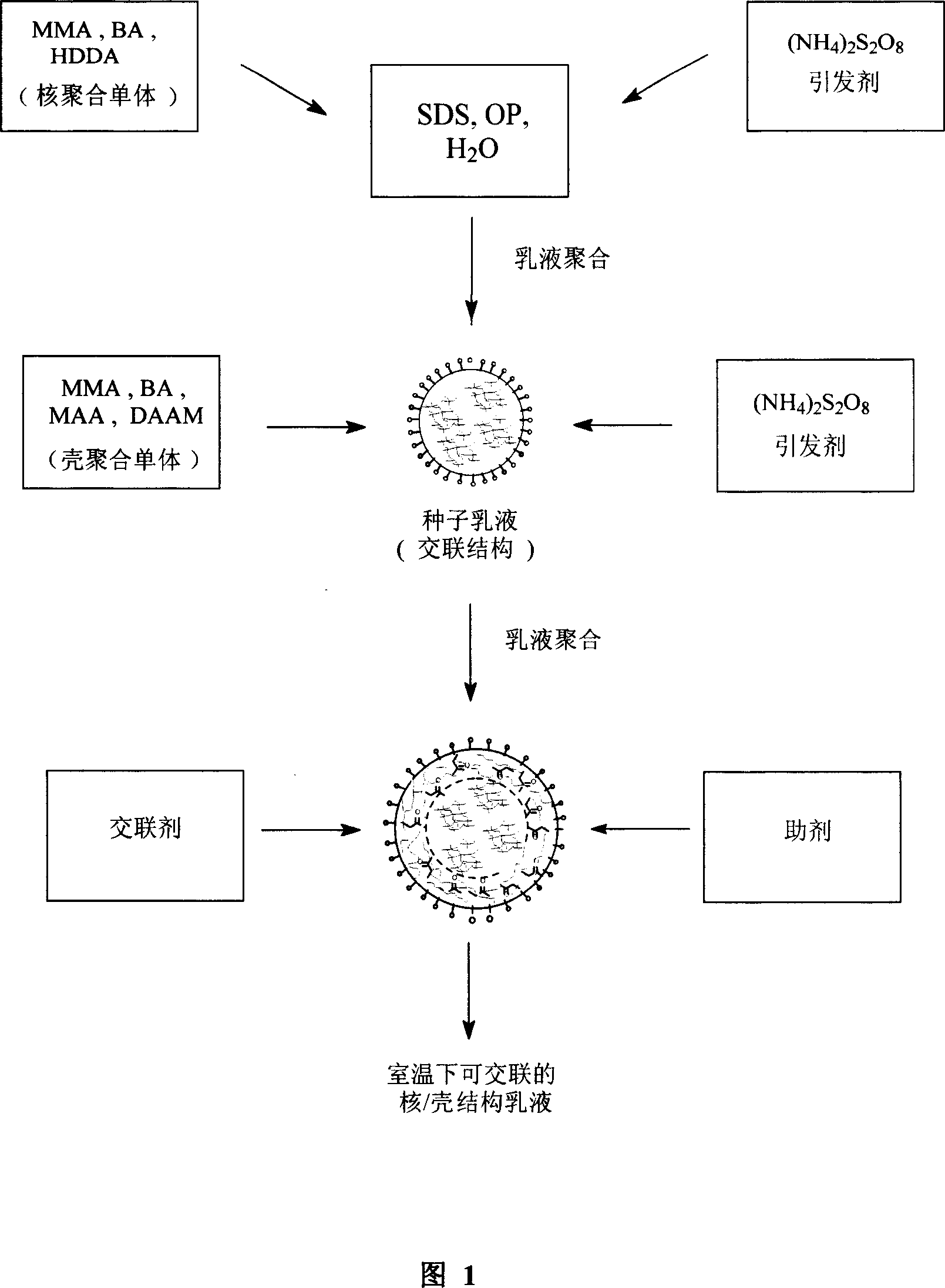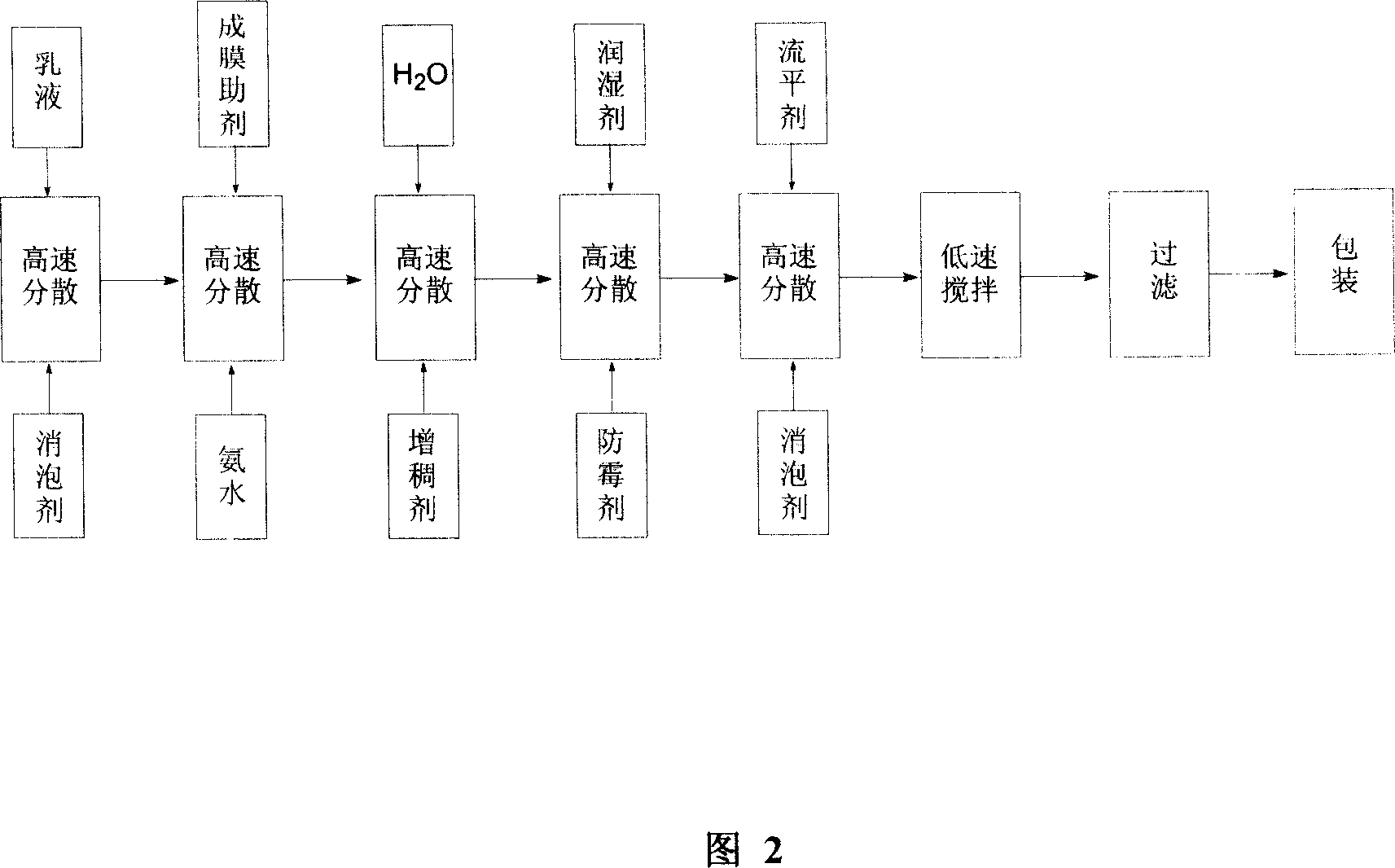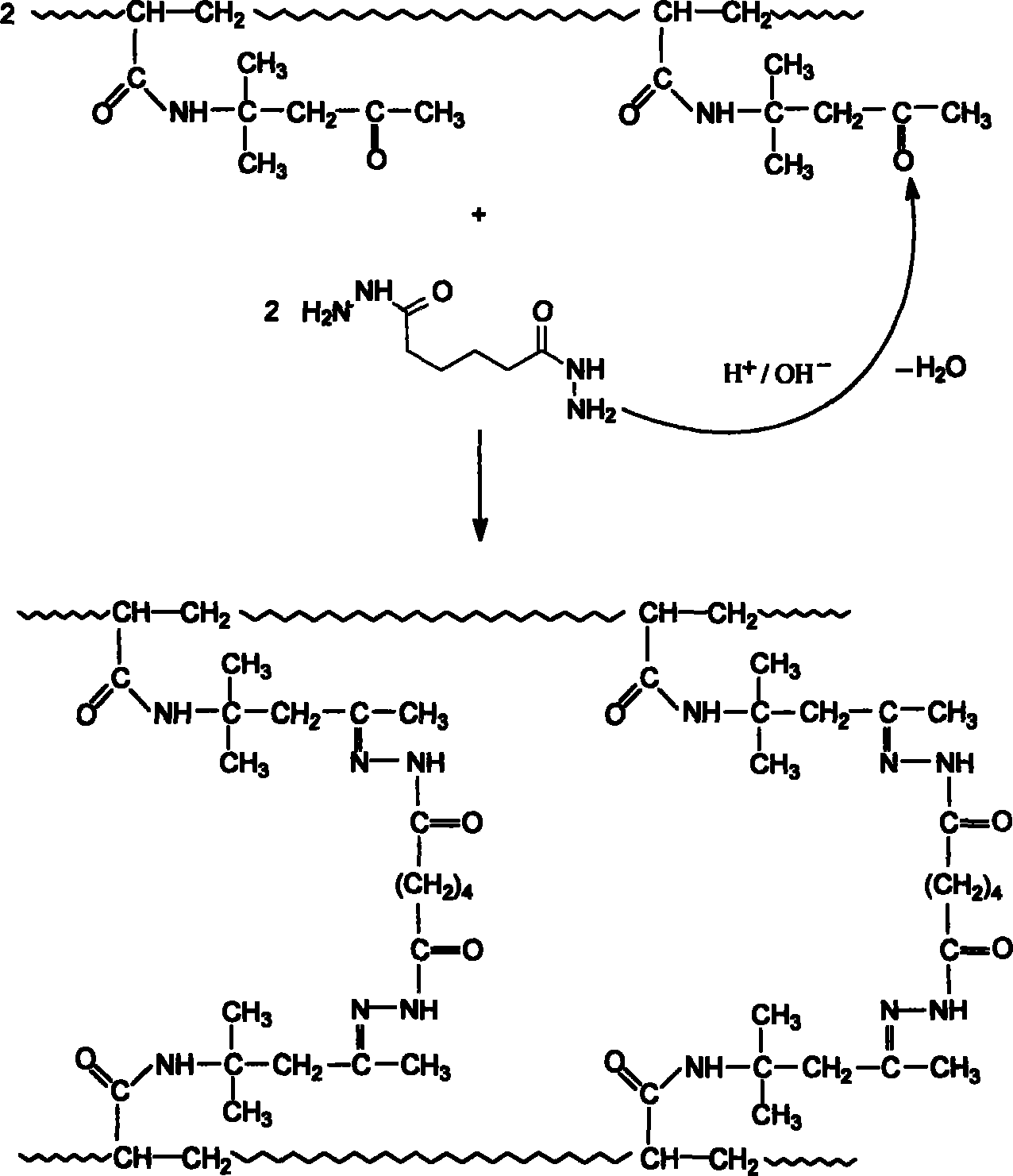Method for preparing thermosetting acrylic ester emulsion coating under room temperature
A thermosetting, acrylic technology, applied in coatings and other directions, can solve the problems of coating hardness, water resistance, anti-adhesion, unsatisfactory chemical resistance, and limited performance improvement of interpenetrating network coatings.
- Summary
- Abstract
- Description
- Claims
- Application Information
AI Technical Summary
Problems solved by technology
Method used
Image
Examples
Embodiment 1
[0057]In a 500mL three-necked reactor equipped with a mechanical stirrer, condenser and constant pressure funnel, add 0.225g of anionic emulsifier sodium lauryl sulfate, 0.675g of nonionic emulsifier polyethylene glycol octylphenyl ether, buffer Add sodium bicarbonate 0.15g and water 95mL, heat and stir to dissolve. Mix 15.96g of methyl methacrylate, 24.05g of butyl acrylate, and 1.5g of 1,6-hexanediol diacrylate, and pour it into a solution containing 0.263g of sodium lauryl sulfate and 0.788 20 mL of polyethylene glycol octylphenyl ether was pre-emulsified for 15 min to obtain a pre-emulsified nucleomonomer. Remove part of the pre-emulsified core mixed monomer to the above-mentioned three-port reactor for high-speed dispersion for 5 minutes, reduce the stirring speed to 300r / min, raise the temperature to 76°C, add 0.15g of initiator ammonium persulfate to initiate the polymerization reaction, and wait until the reaction system turns blue. After the body reflux disappeared, ...
Embodiment 2
[0060] In a 500mL three-necked reactor equipped with a mechanical stirrer, condenser and constant pressure funnel, add 0.225g of anionic emulsifier sodium lauryl sulfate, 0.675g of nonionic emulsifier polyethylene glycol octylphenyl ether, buffer Add sodium bicarbonate 0.15g and water 95mL, heat and stir to dissolve. Mix 23.56g of methyl methacrylate, 26.44g of butyl acrylate, and 2.1g of tetraethylene glycol diacrylate, and pour 0.263g of sodium lauryl sulfate and 0.778g of polystyrene under high-speed stirring. Ethylene glycol octylphenyl ether was pre-emulsified in 20 mL of water for 15 minutes to obtain pre-emulsified nucleomonomers. Remove part of the pre-emulsified core mixed monomer to the above-mentioned three-port reactor for high-speed dispersion for 5 minutes, reduce the stirring speed to 300r / min, raise the temperature to 76°C, add 0.15g of initiator ammonium persulfate to initiate the polymerization reaction, and wait until the reaction system turns blue. After t...
Embodiment 3
[0063] In a 500mL three-necked reactor equipped with a mechanical stirrer, condenser and constant pressure funnel, add 0.225g of anionic emulsifier sodium lauryl sulfate, 0.675g of nonionic emulsifier polyethylene glycol octylphenyl ether, buffer Add sodium bicarbonate 0.15g and water 95mL, heat and stir to dissolve. Mix 28.27g of methyl methacrylate, 31.73g of butyl acrylate, and 1.6g of trimethylolpropane triacrylate, and pour 0.263g of sodium lauryl sulfate and 0.778g of polyethylene glycol into the solution under high-speed stirring. Diol octyl phenyl ether was pre-emulsified in 20 mL of water for 15 minutes to obtain pre-emulsified nucleomonomers. Remove part of the pre-emulsified core mixed monomer to the above-mentioned three-port reactor for high-speed dispersion for 5 minutes, reduce the stirring speed to 300r / min, raise the temperature to 76°C, add 0.15g of initiator ammonium persulfate to initiate the polymerization reaction, and wait until the reaction system turns...
PUM
| Property | Measurement | Unit |
|---|---|---|
| The average particle size | aaaaa | aaaaa |
| The average particle size | aaaaa | aaaaa |
| The average particle size | aaaaa | aaaaa |
Abstract
Description
Claims
Application Information
 Login to View More
Login to View More - R&D
- Intellectual Property
- Life Sciences
- Materials
- Tech Scout
- Unparalleled Data Quality
- Higher Quality Content
- 60% Fewer Hallucinations
Browse by: Latest US Patents, China's latest patents, Technical Efficacy Thesaurus, Application Domain, Technology Topic, Popular Technical Reports.
© 2025 PatSnap. All rights reserved.Legal|Privacy policy|Modern Slavery Act Transparency Statement|Sitemap|About US| Contact US: help@patsnap.com



